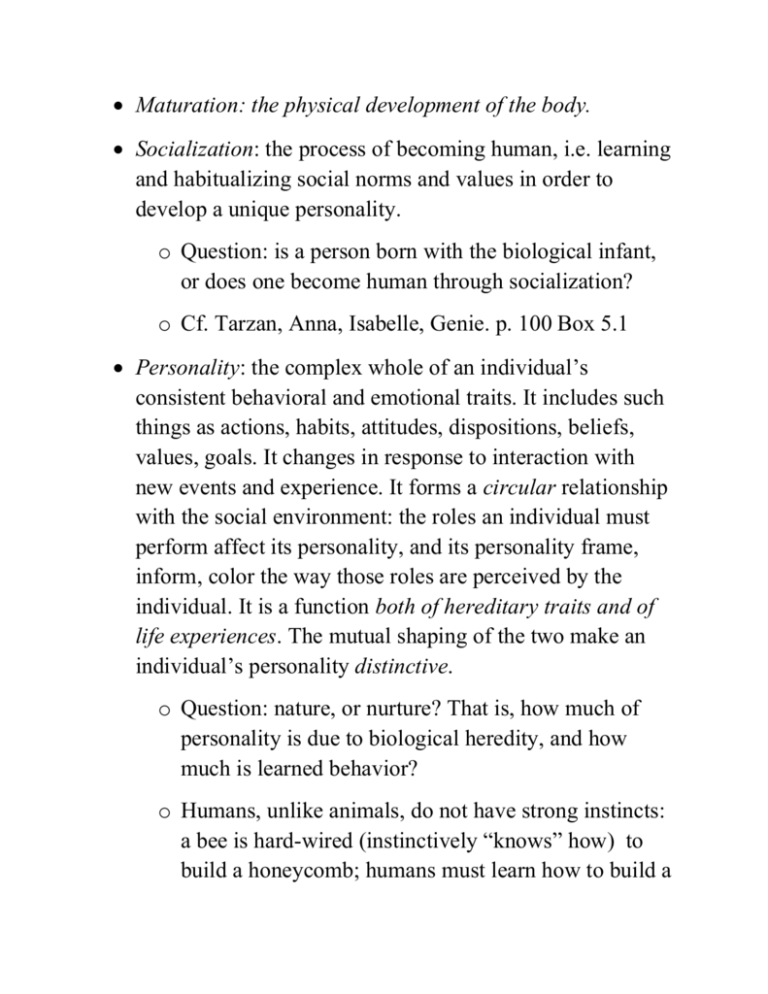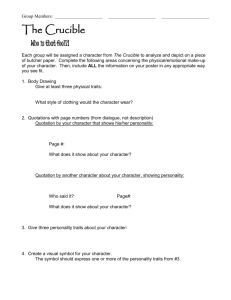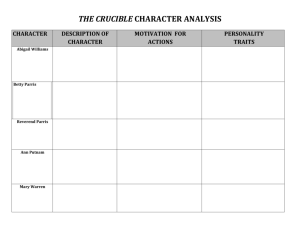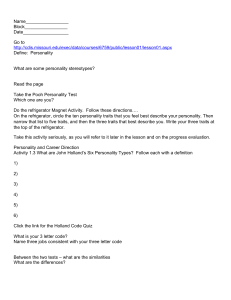Maturation: the physical development of the body. Socialization: the
advertisement

Maturation: the physical development of the body. Socialization: the process of becoming human, i.e. learning and habitualizing social norms and values in order to develop a unique personality. o Question: is a person born with the biological infant, or does one become human through socialization? o Cf. Tarzan, Anna, Isabelle, Genie. p. 100 Box 5.1 Personality: the complex whole of an individual’s consistent behavioral and emotional traits. It includes such things as actions, habits, attitudes, dispositions, beliefs, values, goals. It changes in response to interaction with new events and experience. It forms a circular relationship with the social environment: the roles an individual must perform affect its personality, and its personality frame, inform, color the way those roles are perceived by the individual. It is a function both of hereditary traits and of life experiences. The mutual shaping of the two make an individual’s personality distinctive. o Question: nature, or nurture? That is, how much of personality is due to biological heredity, and how much is learned behavior? o Humans, unlike animals, do not have strong instincts: a bee is hard-wired (instinctively “knows” how) to build a honeycomb; humans must learn how to build a house, which they may construct in a variety of ways. Thus, even though humans have biological drives (for food, drink and sex), how these drives are to be satisfied is determined by cultural alternatives open to the individual. Culture therefore represents the accumulated experience of generations of people. o Humans also have a biological need for loving human contact: to form emotional bonds with fellow humans. Cf. the experiment with rhesus monkeys: foodprovider machine is neglected in favor of soft and cuddly cloth, which does not provide food. (Harlow, 1966) Grooming practices in apes. “The study provides strong evidence that the same brain chemicals that control physical pain also regulate the psychological ache of loss and separation” (Carey, 2004, D7). p. 103 Question: to what extent are personality traits such as intelligence, sociability, timidity, and temperament are biologically inherited like eye color, hair type, and body length? Why do siblings differ? Genes—50 percent shared—and the role of the environment. o biology does not in and of itself determine an individual’s personality; rather, the way in which a society and culture interpret inherited traits shapes the values and images which go into shaping an individual’s character. Eg. It is not whether X is skinny or fat which matters in the final analysis, but how a given society values these traits: the individual will have formed his character either in response to a socially reinforced positive or negative self-image. o Modal personality: the set of personality traits which a given culture is said to shape through common social experiences: Latin lover, the hard-drinking Irish, arrogant French. The emergence of the self: o Infant starts out as an indeterminate field of drives with no recognition of a separation between itself and other objects in its environment. o The awareness of one’s distinctiveness, of one’s self as separate from other objects presupposes interaction with other subjects (i.e. other selves). o The process whereby a distinct self capable of performing various roles is called socialization. This process transmits the skills necessary for survival in society; it encourages and makes possible cooperation toward socially desirable goals; it teaches social norms and roles; it provides individual’s with their identity. o Theories of socialization: Interactionist theories: the self is the result of interaction between the individual and those around him. The looking-glass self (Cooley) Those around the individual are as if a mirror in which the individual sees his image as others see it. First the family, then the peer groups, and so on: the individual gets a sense of how he stands in particular relationships to others, how they feel about him. Others = Society in general. Thus the emergence of the self presupposes the internalization of society. Symbolic interactionism (Mead) A well-defined sense of self requires symbolic interaction. o At first nonverbal: you cry your parents respond. o With language, ideas replace direct actions and mind and self become possible: the child internalizes the attitudes of others through linguistic communication. o Self-awareness (self-consciousness) as thinking about one’s self becomes possible when you can make your own self the object of your thoughts. Self-control and self-criticism is how society controls individuals; but they also establish the individual as a definite self, capable of independent thought and action as distinct from others. o Role-playing: children learn, in the course of playing games, the essential competence to step outside themselves, view themselves as others do, by taking on different roles. Initially: the roles of family members are taken on and imitated. (Significant others.) Later: individuals take on the role of society as a whole, Mead’s name for which is the generalized other. Hence the development of a mature self corresponds to the process whereby we go from “Mom/Dad says I must do X” to “It’s not right to do X.” The internalization of the generalized other is how an individual makes the norms, values, mores, etc. of society a part of himself. Mead also distinguishes “the I” (as the creative, spontaneous elements of the individual) from “the me” (as the socialized elements that more strictly reflects the attitudes of others in society). The I is unique to each individual; the me is conventional and representative of shared societal expectations and values.








